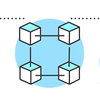How to Implement Code Splitting in a React Application
As web applications become more complex, the size of the JavaScript bundles that are required to run them can become unwieldy. This can lead to slow load times and poor user experiences, particularly for users on slower connections or less powerful devices. Code splitting is a technique that can help to address this issue by breaking up the JavaScript code into smaller, more manageable pieces that can be loaded on demand. In this article, we will explore how to implement code splitting in a React application.
What is Code Splitting?
Code splitting is a technique that involves breaking up a large JavaScript bundle into smaller, more manageable chunks. This can help to reduce the size of the initial download that is required to load a web application and improve the load times for users. With code splitting, only the JavaScript code that is required for a particular page or feature is loaded, rather than loading the entire codebase upfront.
Implementing Code Splitting in a React Application
There are several approaches to implementing code splitting in a React application, but one of the most common is to use the dynamic import() function that is built into modern browsers. This function allows us to load modules asynchronously at runtime, rather than including them in the initial bundle.
To use dynamic import() in a React application, we can create a separate chunk for each feature or page that we want to load on demand. We can then use React.lazy() to create a new component that will load the chunk when it is needed. Here is an example:
import React, { lazy, Suspense } from 'react';
const MyComponent = lazy(() => import('./MyComponent'));
function App() {
return (
<div>
<Suspense fallback={<div>Loading...</div>}>
<MyComponent />
</Suspense>
</div>
);
}
In this example, we are using React.lazy() to create a new component called MyComponent that will load the code for that component on demand. We are also using the Suspense component to display a loading indicator while the code is being loaded.
Conclusion
Code splitting is a powerful technique that can help to improve the performance of React applications by reducing the size of the JavaScript bundles that are required to run them. By breaking up the code into smaller chunks that can be loaded on demand, we can improve the load times for users and provide a better overall user experience. If you are building a React application, consider implementing code splitting to optimize the performance and speed of your application.
Outlook on Hot Topics
As web applications continue to grow in complexity, code splitting will become an increasingly important technique for optimizing the performance of these applications. One emerging trend in the world of code splitting is the use of server-side rendering to further improve the load times for users. By rendering the initial page on the server and then loading additional code on demand, we can provide an even faster and more responsive user experience. Look for this technique to become more prevalent in the coming years as web developers continue to push the boundaries of what is possible with code splitting and other optimization techniques.

If you're preparing for a senior Node.js developer position, it's important to be ready for technical interview questions that will test your knowledge of Node.js and its related technologies. In this

As a JavaScript developer, it's essential to have a solid understanding of the language and its various concepts. In this article, we will provide some common interview questions and their answers to

Frontend development is an essential part of web development that focuses on building the user interface of a website or application. Frontend developers are responsible for creating visually appealin

React is a popular JavaScript library used for building user interfaces. It has become increasingly popular over the years and is now widely used in web development. If you're preparing for a React in

Understanding how `this` works in JavaScript is essential for any developer working with the language. In this article, we will explore what `this` is, how it works, and common use cases.

Event delegation is a concept in JavaScript that allows developers to handle events efficiently and improve the performance of web applications. In this article, we will explore what event delegation

JavaScript is a powerful programming language that allows developers to create complex web applications. One of the most important concepts in JavaScript is the ability to handle asynchronous code. In

As web applications become more complex, the size of the JavaScript bundles that are required to run them can become unwieldy. This can lead to slow load times and poor user experiences, particularly

Managing state in a complex application can be a daunting task, but Redux can help simplify the process. Redux is a popular library for managing state in JavaScript applications, and it can be used wi
